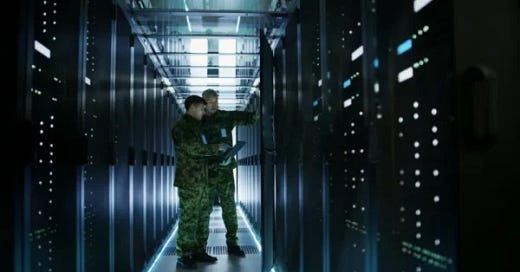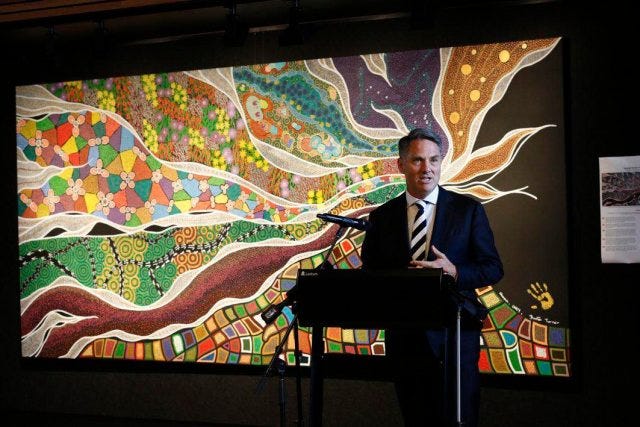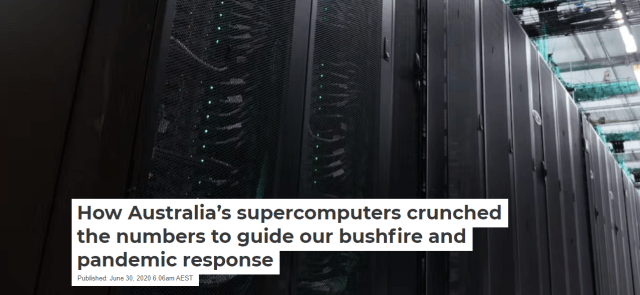A new supercomputer has been officially launched at Defence Science and Technology Group’s Edinburgh, South Australia site.
The new rapid data processing supercomputer is tipped to support the development of modern weapons systems, including technology promised under the AUKUS agreement.
According to acting Prime Minister and Minister of Defence, Richard Marles, the state-of-the-art investment will make Australia’s capabilities “up to a million times faster than a standard computer” and will enable the crunching of large data sets to address some of defence’s most challenging engineering problems.
“…Even more important than the data itself, is the ability to rapidly and reliably analyse and process that data,” said Marles in a statement.
“This high performance computing facility provides a secure and sovereign capability to do just that.”
The new supercomputer will play an important role in design, development and analysis of modern weapon and national security systems, and support key AUKUS priorities, such as nuclear powered submarines, quantum technologies and artificial intelligence.
“Defence acknowledges the assistance provided by representatives of the US Department of Defence’s High Performance Computing Modernization Program who willingly shared their 30 years of knowledge and experience to support Australia’s work to establish this world-class capability,” added Marles.
Marles said the supercomputer ranks in the top 50 systems in the world, suggesting performance capabilities of at least 10 petaflops compared to the current Top500 list.
“This is a game changer,” said Chief Defence Scientist Professor Tanya Monro.
“If we want to accelerate the timelines in which we deliver capability for the Australian Defence Force, we need to be able to take these complex platforms and put them inside the computer.”
“So we can refine, develop, and essentially skip generations of testing and experimentation that would otherwise have taken years, and condense them down into weeks and days.”
The new computing infrastructure has been named “Taingiwilta”, meaning “powerful” in the language of the Kaurna people, and is housed in a purpose-built, secure facility dubbed “Mukarntu”, meaning “computer”.
The announcement follows a visit to the Pentagon in July by Richard Marles, where the Minister of Defence was hosted by the United States Secretary of Defense, Lloyd J. Austin III.
During the meeting, both leaders “reaffirmed” the importance of the Australia-United States Alliance and their “shared resolve” to “preserve the rules based global order that underpins our security and prosperity”.
Remember when Peter Dutton (as Defence Minister) visited the United States right before the coronavirus pandemic began? Could we be gearing up for something new on the horizon?
The new supercomputer is a three year vision, first announced in 2019 under the Liberal government.
FOUR YEAR PROJECT
Australia’s high-performance research computing infrastructure has previously been led by two centres: the National Computational Infrastructure (NCI Australia) in Canberra and the Pawsey Supercomputing Centre in Perth.
In 2019, Department of Defence asked for approval from the Joint Committee to proceed with a proposed Defence High Performance Computing Centre (DHPCC) in Edinburgh, South Australia.
This centre will provide the Defence Science and Technology Group (DST) and the Australian Defence Organisation with secure capability for “high-fidelity modelling and simulation” it currently did not possess.
DST is the Australian Government’s lead agency responsible for applying science and technology to safeguard Australia and “delivers support to the Australian Defence Force on operations, sustainment and improvement to current capability, and development of new and emerging capability”.
An analysis by DST of the high performance computing capability found that DST required: “…a secure computer centre with sufficient physical capacity to house future specialised high performance computing infrastructure and access to DST’s classified research networks.”
The estimated cost of the project was $68.8 million (excluding GST).
Design activities were completed by late 2018, with construction commenced from early 2019.
The facility was originally slated for completion in mid-2020, however, was delayed by the pandemic.
Now, with the project finally completed, what could this mean for the future of Australia? The answers might be a bit harder to decipher.
THE HIDDEN USE
Although many see supercomputers as a weapon in new-age ‘warfare’, there are other important uses of these systems that are overlooked — particularly the use of data collection for ‘expert analysis’.
Supercomputers are connected to massive data systems, and supported by scientists, can yield ‘crucial insights’ at scale, quickly enough to help our agencies identify and respond to crises.
That’s right, these computers are the ones pumping out the false numbers seen time and time again:
At the beginning of the pandemic, for example, NCI Australia and the ‘Pawsey Supercomputing Centre’ supported the Australian and international research community in undertaking COVID-19 research through provision of streamlined, prioritised and expedited access to computation and data resources.
Remember those wild numbers stating hundreds of thousands would die if we didn’t lock down?
Supercomputers provided those numbers.
They also control many complex hospital AI algorithms that determine the ‘severity’ of a patient’s condition, including COVID-19 analysis.
https://tottnews.com/2021/12/24/food-for-thought-december-2021/
Computers run more than we think and are the guiding hand behind many decisions that are made on a daily basis.
Now, with one of the fastest supercomputers in the world in South Australia, there may be no bounds to what can be ‘simulated’ for expert analysis.
What do you think they could be ‘simulating’ with this new system?
Could it be you?









